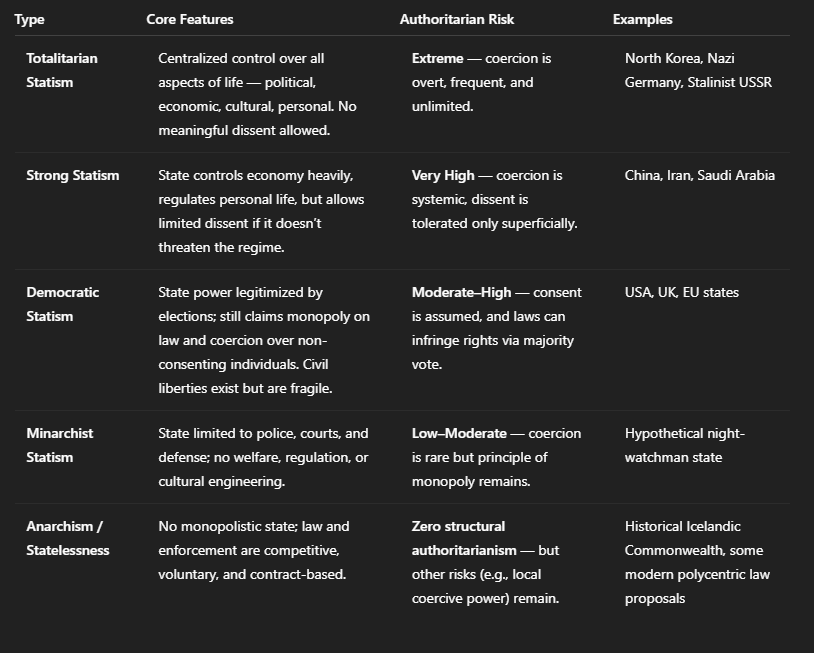Statism Is Always Authoritarian
Why Even “Friendly” States Rely on Coercion
Colin Wright recently tweeted: "It's not 'authoritarian' to enforce laws and arrest criminals." The problem is that this framing skips the essential question: Who defines the law, and by what right? If the law itself is unjust, or if its enforcement rests on a monopoly of coercion over peaceful individuals without consent, then it is authoritarian — by structure, not just by abuse.
I. Core Definition
Authoritarianism (structural):
A political system in which a central authority claims the legitimate right to initiate coercion over peaceful individuals without their explicit, ongoing consent.
Statism:
Any system where the state holds a monopoly on law and force, with no competitive alternative that individuals can freely choose or reject without forfeiting basic rights.
Key point:
Statism is structural authoritarianism, varying only in degree.
II. The Spectrum of Statism
III. Why All Statism Is Authoritarian
Monopoly of Force — No peaceful opt-out.
Presumed Consent — Individuals are treated as having agreed to the system without explicit contract.
Unilateral Rule-Making — The state decides what is “law” and can redefine crime at will.
Coercive Enforcement — Compliance is backed by threat of force, even for victimless “offenses.”
Whether it’s gentle authoritarianism (traffic laws enforced on non-consenting pacifists) or brutal authoritarianism (secret police breaking into homes), the mechanism is the same — the state asserts the right to coerce beyond voluntary agreement.
IV. The Continuum Argument
The difference between “friendly” democracies and brutal dictatorships is not that one is authoritarian and the other isn’t. It’s that one uses its authoritarian power sparingly and with social consent — for now.
But the underlying structural license to coerce is identical. Once granted, it can be expanded — and historically, it often is.




